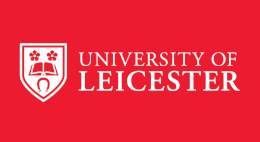U601351.pdf (17.39 MB)
Effects of vitamin c on dna damage, iron homeostasis and gene expression profiling in human fibroblasts
thesis
posted on 2014-12-15, 10:33 authored by Tiago Pereira de Lacerda Costa DuarteVitamin C (ascorbic acid, AA) is an important antioxidant in human plasma. AA has, however, other important, non-antioxidant roles in cells. Of particular interest is its involvement in iron metabolism, since AA enhances dietary iron absorption, promotes Fenton reactions in vitro and was reported to have deleterious effects in individuals with iron overload. The mechanisms of AA-driven free radical generation from iron have been the subject of great discussion. However, whilst the AA-driven Fenton reaction is well established in test tube reactions, the relevance of this pro-oxidant chemistry in cells, tissues or organisms remains unclear. To understand whether AA has an overall antioxidant or pro-oxidant effect in cells, the present study investigated its ability to modulate iron homeostasis and iron-mediated oxidative injury in primary normal human diploid fibroblasts. Results show that AA increased the levels of intracellular catalytic iron and concomitantly modulated the expression of two well known iron-regulated genes, ferritin and transferrin receptor. Notably, treatment of confluent fibroblasts with physiologically relevant concentrations of AA was not harmful but sensitised cells towards iron-dependent, H2O2-induced DNA strand breakage and cell death. The possibility that AA regulates cellular function, through its effects on the intracellular redox state and/or on iron homeostasis, was also addressed by performing a genome- wide analysis of AA-induced gene expression in human fibroblasts. Results showed that AA stimulates quiescent cell populations to re-enter the cell cycle and proliferate. In summary, this work shows that AA increases iron availability and enhances ROS-mediated, iron-dependent damage in human cells. It is proposed that AA may exacerbate the deleterious effects of metals in vivo and promote normal tissue injury in situations associated with elevated ROS production. It is also suggested that AA may promote fibroblast activation during the process of wound healing, where quiescent dermal fibroblasts are required to readily undergo cell division.
History
Date of award
2006-01-01Author affiliation
Cancer Studies and Molecular MedicineAwarding institution
University of LeicesterQualification level
- Doctoral
Qualification name
- PhD
Language
enAdministrator link
Usage metrics
Categories
No categories selectedKeywords
Licence
Exports
RefWorks
BibTeX
Ref. manager
Endnote
DataCite
NLM
DC

